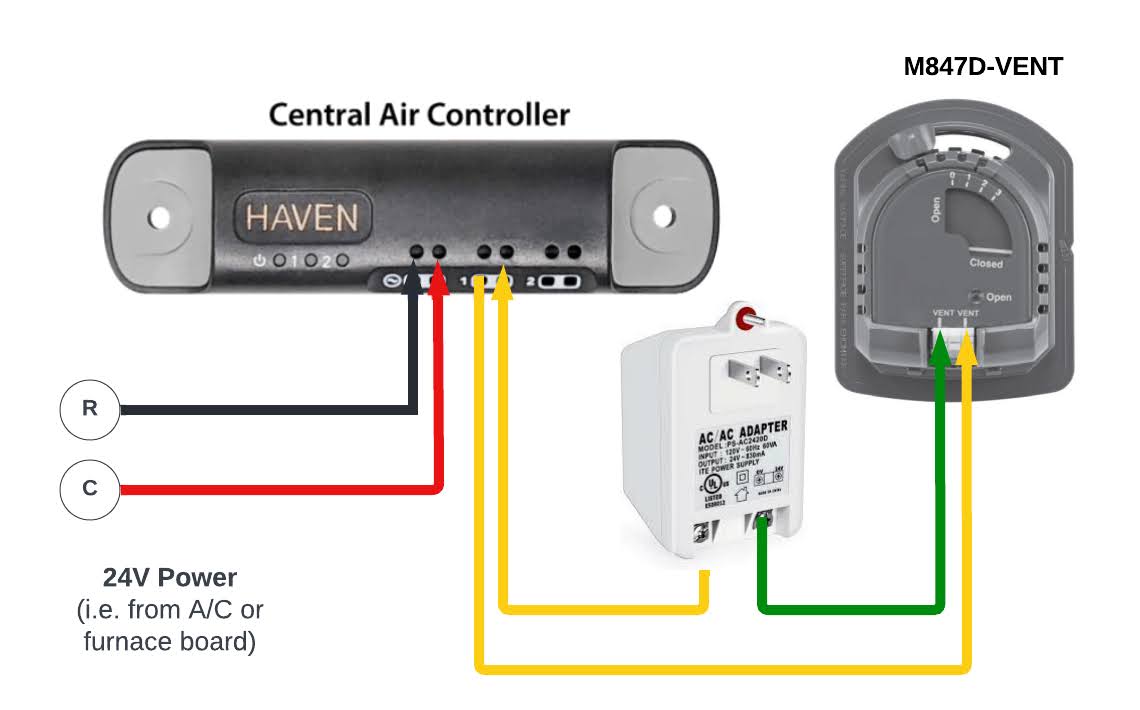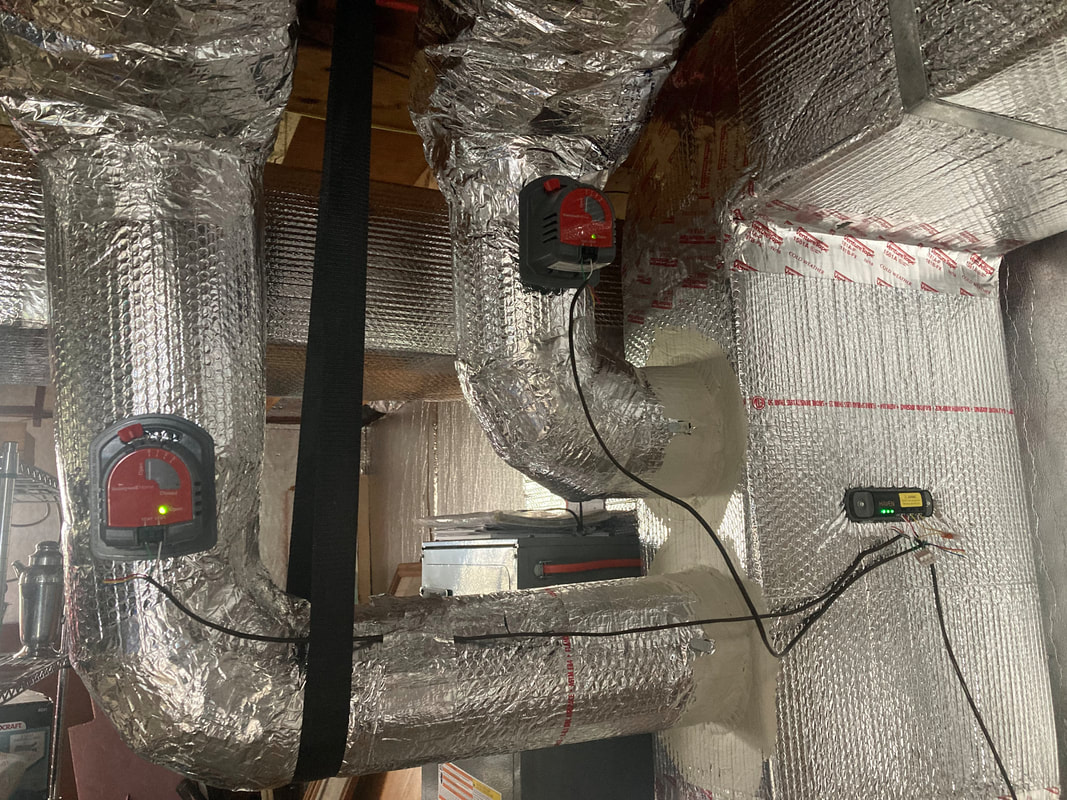|
You may have noted that I haven’t written anything about air quality monitors in a long time. Why? I was frustrated that there wasn’t a product that had the attributes I wanted, and also that there wasn’t a product that could do anything when pollutant levels justified action. That has completely changed recently with the Haven central air quality monitor and controller, which can actually take action from what it measures, and it offers the feature list I’ve been looking for. We’ve installed them in several of our AirBnbs, this column will look at how we came to that conclusion and how it’s going early in the experiment. But first, let’s take a step back a few years and look at air quality monitors. IAQ Monitor Must Haves After spending a bunch of time with 7 air quality monitors in 2016 to try and learn what they’re capable of and which ones were better than the others, I came up with a list of 3 things that are must haves to deploy these in client homes:
I really didn’t think this list was that hard to meet. Yet since the Foobot went off the market a few years ago, no room monitor actually met all of these. While there are plenty that are good for one off applications, none were a good fit for a pro who wants to monitor multiple homes with ease. Frankly I gave up on monitors. We’d learned enough to come up with the BAD ASS HVAC design, which does a pretty good job automatically controlling air quality without any sensors or actually turning things on and off when a pollutant gets too high. Essentially, I gave up on the dream of truly controlling IAQ and moved on with my life. Enter Haven Having tried and eventually written off all room air quality monitors because they were lacking one of the 3 things above, I heard about the Haven Central Air Monitor. The Haven Central Air Monitor is different, it goes inside the return duct just before the filter. At first I didn’t like this about it, I’d grown used to room monitors. They have their own proprietary PM2.5 sensor that has remarkable accuracy in the lab. It measures 6 things:
Note the four things I want to be sure to measure are in there - temperature, humidity, PM 2.5 and tVOC. They also have a dashboard and their readings are generally quite good. I have a struggle with two of their humidity sensors, but the others have been on point, and most importantly the PM and tVOC sensors match events that I know of - cleaning, cooking, painting, etc. Room vs In Duct Monitors There are two big problems with room monitors: clients unplug them eventually, and the sensors get dirty and out of calibration after a year or two. While at first I didn’t like the sensor being inside the duct, that placement solved the customer unplugging them because the light annoys them. They can’t see it, it’s out of sight, out of mind in the attic, basement, garage, or crawlspace. The sensors are easy to clean with a Q-tip or similar when changing filters and doing easy maintenance, solving the other main issue with room sensors. So the Haven solves the two primary weaknesses we found in in room monitors. I was intrigued. I now know most of their team, they are highly focused not just on selling products, but actually solving problems, and they also value technical excellence. But there was still a problem. The Car Alarm Conundrum Have you ever heard a car alarm going off in your neighborhood and thought “why don’t they turn that thing off?!” That’s essentially what indoor air quality monitors do - they tell you there’s a problem, but they can’t solve it. Basically they are annoying without offering a solution. In the commercial world there has been “demand control ventilation” for years that monitors pollutants like carbon dioxide and can turn on devices to solve the problem. For homes we haven’t had a solution - until Haven came out with their central air controller last year. The Haven monitor talks to the controller when something is amiss with IAQ. Each controller has two dry contacts you can use to turn on the equipment of your choice. You can use multiple controllers with one monitor, so you can control 4 or even 10 different devices if desired. Conundrum solved? Trying It Out: Haven + BAD ASS HVAC Being an early adopter, I wanted to try out the controller with my monitor. This is something I wanted to try in one of our homes though, it’s early enough that I didn’t really want to try it with a client in case something went wrong. We recently moved to Fayetteville, West Virginia near the New River Gorge National Park. We bought two little houses next to each other (700 and 800 square feet.) We themed them, one is the Game House with board games and the other is the Candy Cottage which has a Willy Wonka feel. The Game House is done to the AirBnb specification I proposed in this column late last year - the bath fan and range hood are both vented outdoors, it has BAD ASS HVAC (with a standalone small dehumidifier for dehumidification), and a 14-50 plug for EV charging. I still need to figure out how to show guests what their air quality looks like. They both got 1.5 ton Daikin Fit heat pumps (another thing I wanted to try out.) The Fresh Air Strategy of My (Very Realistic) Dreams Dr. Joe Lstiburek has talked about bringing in 50% of ASHRAE 62.2 guidelines all the time, then ramping up to 150% as needed. I really wanted to see how that might work in the real world. For a long time we’ve wanted to try out two fresh air ducts, one open almost all the time, and the other open when tVOCs/CO2 got too high. I’ll write about fresh air strategies soon, so for now please suspend your arguments in your mind about supply only, exhaust only, and balanced ventilation. These homes have a supply only strategy. In each of the houses, I had two 6” ducts run from the HVAC return to outdoors, each with a motorized damper, see the photo. Our preferred fresh air control strategy is to bring in a small amount of outdoor air (10-30 cfm) all the time, except when it gets very hot or cold. In Cleveland I usually set a Ranco controller to close the damper above 80F and below 20F. At those temps stack effect helps take over for bringing in a bit of outdoor air, and the temperature seldom stays below/above those temps for more than 12 hours. In measuring airflow from 6” outside air ducts into returns, they typically bring in 10-30 cfm on low fan speed and 30-70 cfm on high. It mainly depends on how short the fresh air duct is, how close the duct is to the filter, and how much negative pressure is in the return plenum. Setting Up the Haven Controller In each house I have two outside air dampers to control. The software for the Haven controller is still a bit early, so don’t expect perfection. I’ve known most of the team for years now, they have a strong drive towards excellence, so I trust that they will get any bugs worked out over time. Presently they don’t have a way to control a motorized damper, but Graham in tech support created a wiring schematic for me to make one work. Since there is no program for dampers yet, I had to game them by calling them something else:
My overarching strategy here is to keep tVOC/CO2 levels reasonable when these small homes are fully occupied, which is 6-7 people. Our neighbors have commented how the air feels and smells fresher than they are used to, so it appears to be working. The Good The good news is that the controller absolutely works. I love popping into the basements of these two homes and seeing dampers activated. The tVOC levels consistently stay low, which by proxy means the CO2 levels are low too. I’m thrilled with this! It’s working! This is a game changer because now we don’t have to just install a passive system for IAQ, we can get active with it. You can install multiple controllers too with almost not limit Other Control Strategies I’m not using many of the strategies that Haven is offering such as:
The Bad There have been a few challenges:
For an early product, those are just nits. A Big Step Forward Like I said in the beginning, I’d given up on a) an IAQ monitor that met the requirements I thought were reasonable and b) could actually control things to make IAQ better. Then Haven showed up with their products and made the impossible, possible. Will this be for every client? Of course not. Most won’t care. It will require both monitoring and having some idea what to do if there is an IAQ problem to solve. Unlike throwing a UV light at a client and assuming it’s working, solutions actually have to work. Those things aside, for those of us that truly like to solve problems and see that they are solved, this product gives us an option to do that with an inexpensive solution for our clients. |
AuthorNate Adams is fiercely determined to get feedback on every project to learn more about what works and what doesn't. This blog shows that learning process. |
ServicesCompany |
Buy The Home Comfort Book!
© COPYRIGHT 2017. ALL RIGHTS RESERVED.
|
 RSS Feed
RSS Feed


